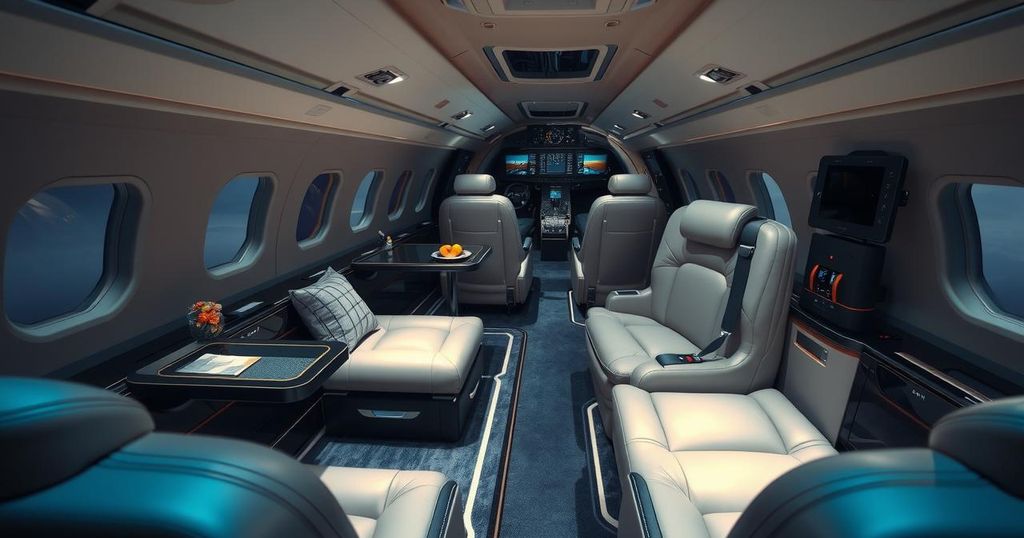What It Would Take to Convert a Jet from Qatar into Air Force One

President Trump aims to convert a luxury Qatari jet into an upgraded Air Force One. However, this process raises concerns about security measures and costs, amidst ongoing issues with Boeing’s existing 747 replacements. Trump’s willingness to cut safety corners poses challenges as he seeks expedited usage of the aircraft before his term ends. The future of this project remains uncertain, given potential delays and costs exceeding $1 billion for necessary upgrades.
In a surprising twist, President Donald Trump has expressed a strong desire to utilize a luxury jet from the Qatari royal family as an upgraded version of Air Force One. However, making this happen hinges on whether he can compromise on crucial security protocols. As legal teams navigate the intricacies of this potential aircraft transfer, discussions about the necessary modifications to ensure presidential safety are also taking place.
The daunting task of transforming the Qatari plane into a suitable presidential transport involves significant security enhancements. Air Force Secretary Troy Meink has indicated that adapting the aircraft could cost under $400 million, although specific details were not disclosed. Yet, given Trump’s eagerness to use the jet before his term ends, some security features might have to be compromised, raising concerns.
Trump’s previous experiences with threats to his safety are well-known; he’s survived two assassination attempts. His recognition of the risks he faces compounds the challenges: balancing security requirements with his desire for speed in getting the Qatari plane operational. A White House official, wishing to remain unnamed, noted that the intent is to expedite the jet’s readiness while still upholding security standards, but precise timelines remain vague.
The history of Air Force One began with a C-54 Skymaster designated for Franklin D. Roosevelt. Fast forward, the current aircraft in service—the Boeing 747—has undergone extensive years of refurbishment for replacement, costing $5.3 billion. Each new 747 is designed with special features: high levels of survivability and communication capabilities being paramount among them. The government had mandated more than a decade ago that these planes must possess four engines to remain airborne even if one or two fail.
However, these stringent requirements mean that obtaining parts for the aging 747 is already becoming increasingly difficult. The Air Force One designation comes with an extensive arsenal of classified communication systems and anti-missile defenses, enabling the president to command military forces in crisis scenarios. Deborah Lee James, a former Air Force secretary, emphasized that ensuring the aircraft remains operational is an absolute priority regardless of external threats.
Should modifications to the Qatari jet be necessary to meet these security demands, estimates suggest costs could soar to $1.5 billion and take many years to implement effectively. Amidst this, Secretary Meink attempted to downplay these financial forecasts. He asserted that some anticipated expenses would inevitably overlap with new plane construction costs. Congressman Joe Courtney, however, offered a counterargument, estimating a cost nearer to $1 billion for the retrofitting of the Qatari jet, considering features like encrypted communications and protective upgrades.
There is also speculation about how much of these security measures Trump would prefer to retain. Given that he has previously scaled back some specifications for Boeing’s new planes, there is a possibility he may choose to waive certain enhancements for expediency. Security experts urge caution, knowing that any compromises could jeopardize overall safety. “The Secret Service’s job is to plan for and mitigate risk; it can never eliminate it,” noted Paul Eckloff, a former Secret Service leader.
The situation surrounding Trump’s potential use of the Qatari jet as Air Force One raises significant questions about national security versus expediency. With mounting costs and legal complexities, it remains to be seen how the president will ultimately balance these concerns. With ongoing issues regarding the new construction of Boeing’s 747s, the urgency of this project grows even more critical. As Trump makes choices, the implications could resonate beyond just his personal transportation needs to broader implications for U.S. security.
Original Source: www.thespec.com







